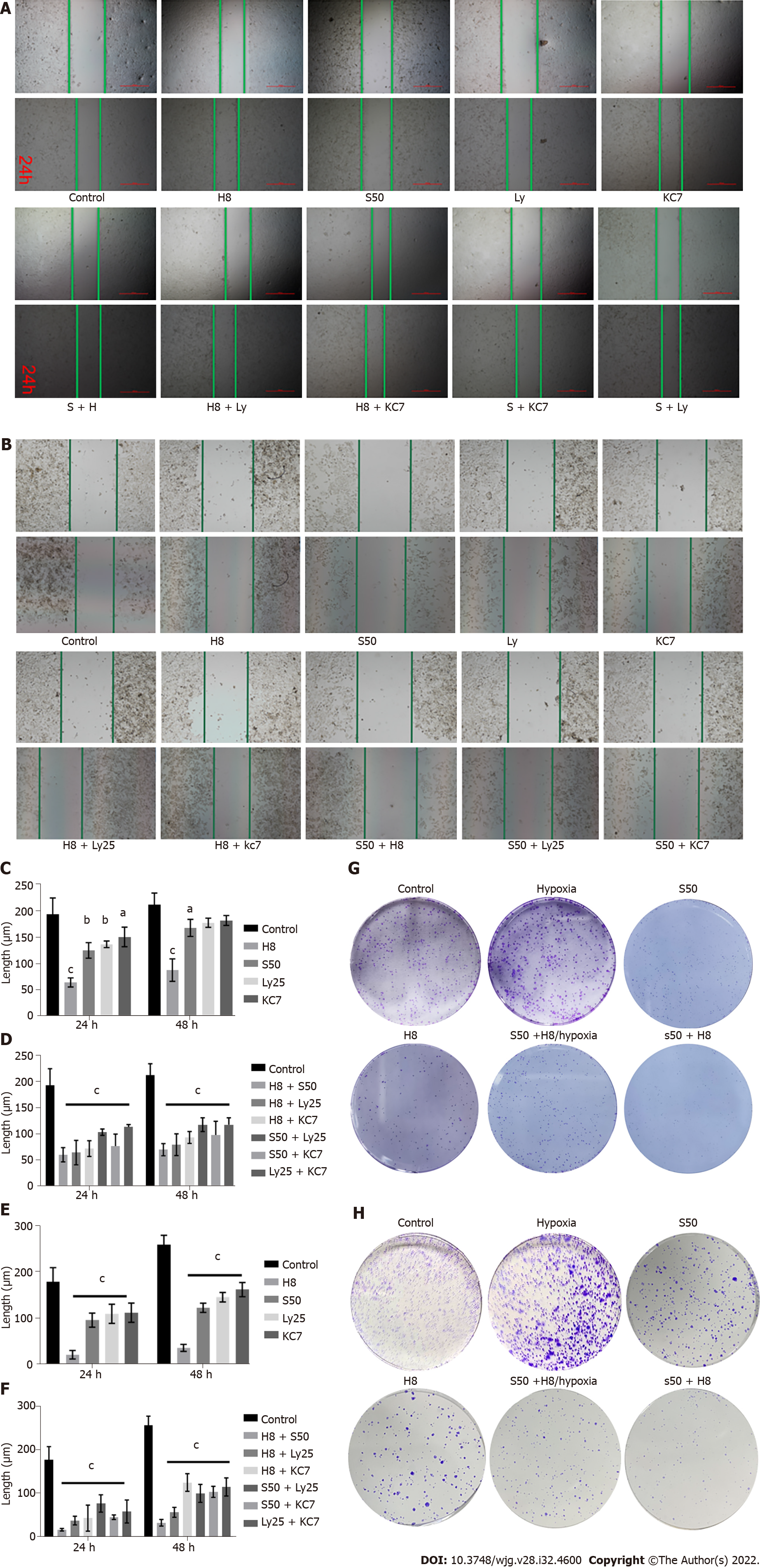Copyright
©The Author(s) 2022.
World J Gastroenterol. Aug 28, 2022; 28(32): 4600-4619
Published online Aug 28, 2022. doi: 10.3748/wjg.v28.i32.4600
Published online Aug 28, 2022. doi: 10.3748/wjg.v28.i32.4600
Figure 2 Inhibitory effect of different drugs on HepG2 and Huh 7 cell invasion and proliferation as demonstrated by scratch and plate clone formation assays.
A and B: Scratch images of HepG2 (A) and Huh7 cells (B) treated with different drugs; C and D: Effect of single drug treatment (C) and combination treatment (D) on HepG2 invasion; E and F: Effect of single drug treatment (E) and combination treatment (F) on Huh 7 invasion; G and H: Clonal size of HepG2 (G) and Huh 7 cells (H) treated with different drugs. aP < 0.05 vs control; bP < 0.01 vs control; cP < 0.001 vs control. H8: 8 mg/mL for Huai Er; S50: 50 nM for sirolimus; Ly25: Ly294002; KC7: 20 μM for KC7F2.
- Citation: Zhou L, Zhao Y, Pan LC, Wang J, Shi XJ, Du GS, He Q. Sirolimus increases the anti-cancer effect of Huai Er by regulating hypoxia inducible factor-1α-mediated glycolysis in hepatocellular carcinoma. World J Gastroenterol 2022; 28(32): 4600-4619
- URL: https://www.wjgnet.com/1007-9327/full/v28/i32/4600.htm
- DOI: https://dx.doi.org/10.3748/wjg.v28.i32.4600









